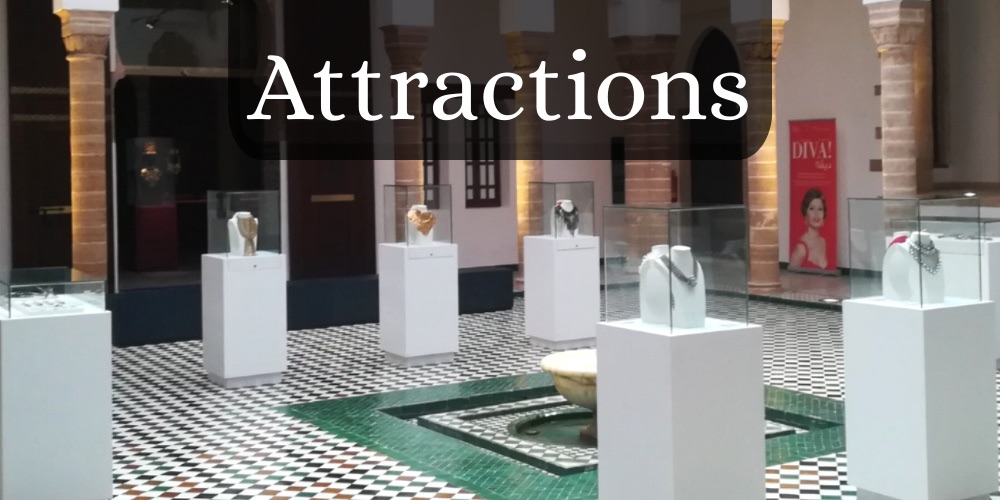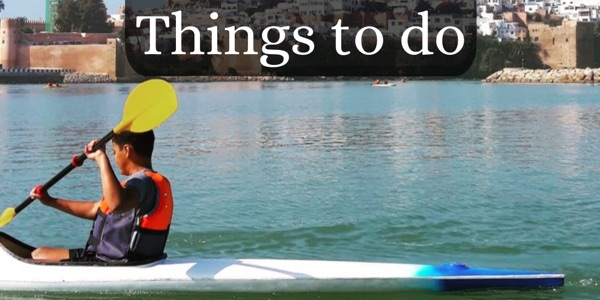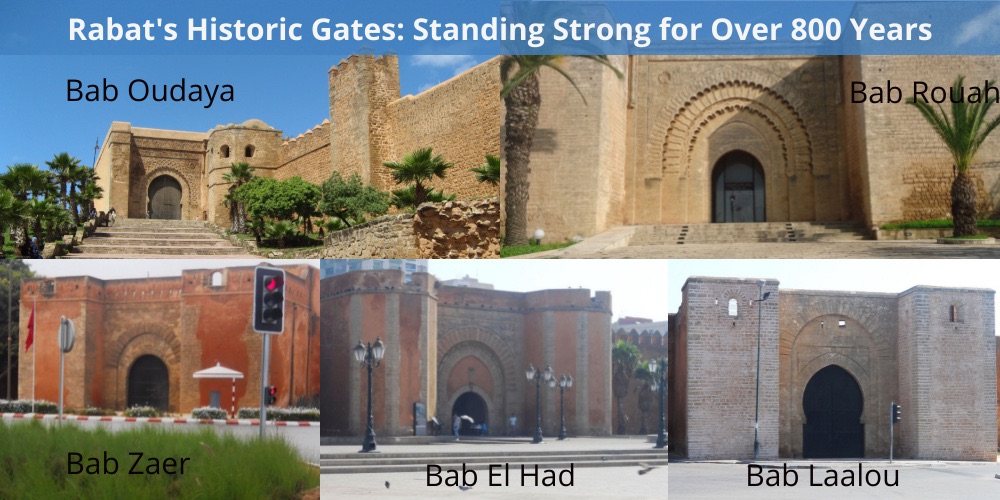
Rabat’s Historic Gates: A Blend of Function and Ornamentation
Rabat’s fortified gates are more than just entryways—they are remarkable architectural landmarks shaped by Moroccan and Andalusian influences. Many of these gates, such as Bab Rouah, Bab Oudaya, and Bab El Had, feature intricate decorations, including geometric patterns, calligraphy, and carved motifs, reflecting the city’s rich artistic heritage.
However, Bab Laalou and Bab Zaer stand apart for their simple and utilitarian design, lacking the ornate embellishments seen on other gates. These two gates were primarily built for functionality, ensuring smooth trade and movement rather than serving as decorative symbols. This contrast highlights the diverse architectural approach within Rabat’s fortifications, balancing grand, artistic expressions with practical, strategic structures.
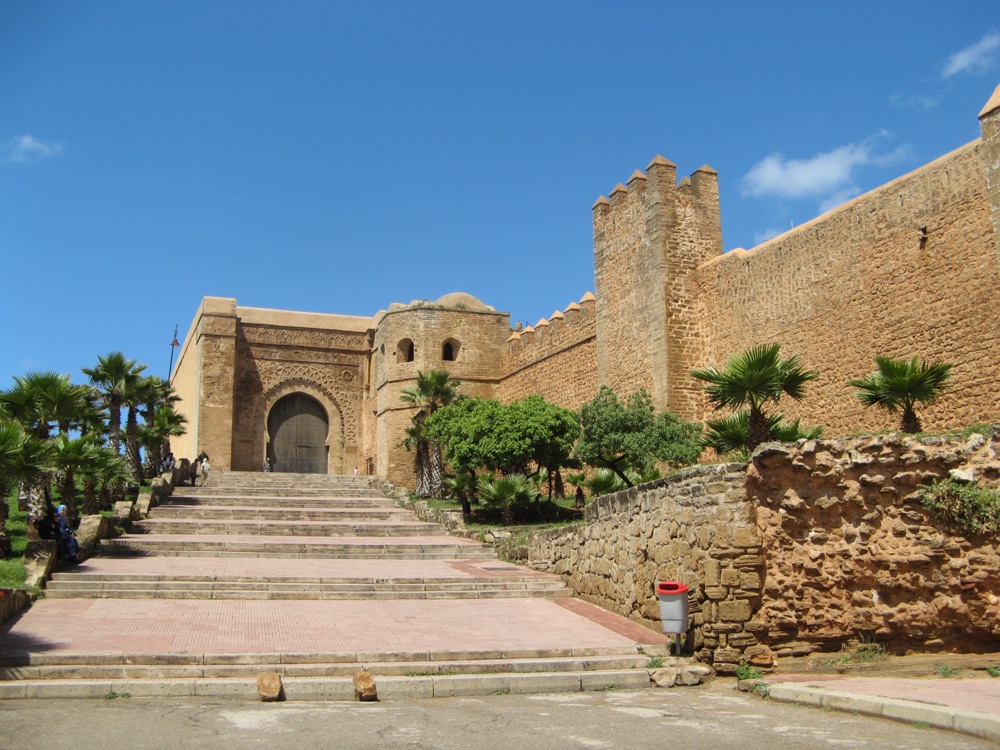
Bab Oudaya , Rabat, Morocco
Bab Oudaya Gallery – A Cultural Landmark (Built in 1185)
Bab el Kebir showcases stunning Moroccan craftsmanship, with its three interconnected rooms designed in the Almohad style. Measuring 38.6 meters long, 16 meters wide, and 13 meters high, this monumental gate was repurposed as an art gallery in the 1980s and later refurbished in 2001 by the Ministry of Culture. Today, it hosts national and international exhibitions, enriching Rabat’s cultural landscape.
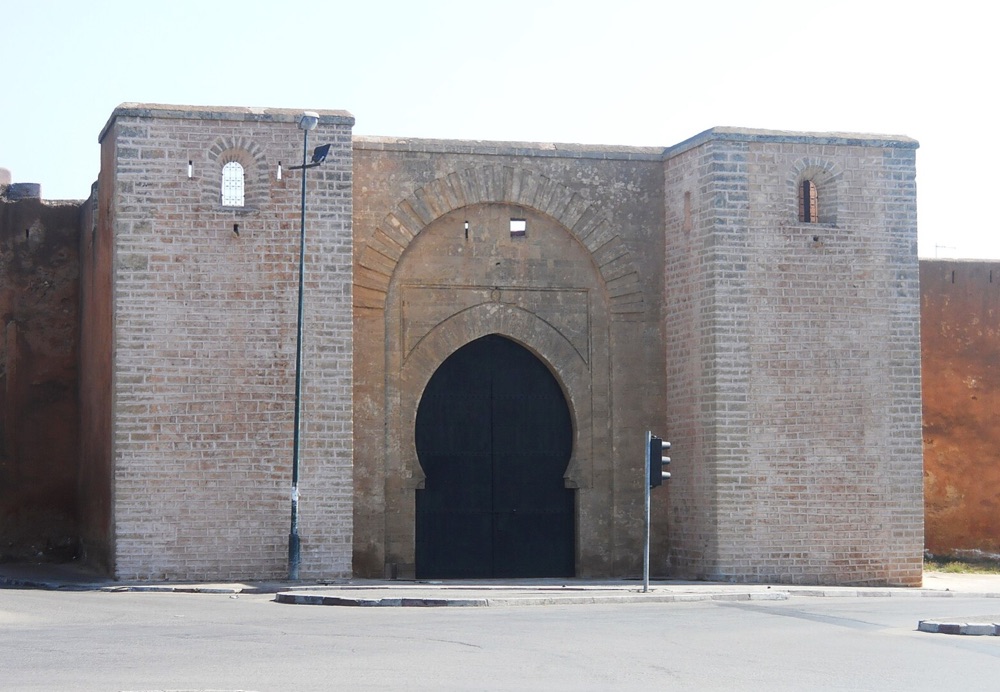
Bab Laalou, Rabat, Morocco
Bab Laalou – The Western Gateway (Built in 1188–1186)
Bab Laalou, also known as Bab al-Ali, derives its name from “Ali,” meaning high, reflecting its imposing stature at 19 meters high and 10 meters wide. As the western entrance to Rabat’s medina, it played a crucial role in facilitating trade and movement.
Lacking decorative embellishments, Bab Laalou was designed for practicality, featuring two rooms—one enclosed and the other open-air—used for storage. Positioned near the Atlantic coast, it benefits from a cool breeze, making it a refreshing stop for travelers.
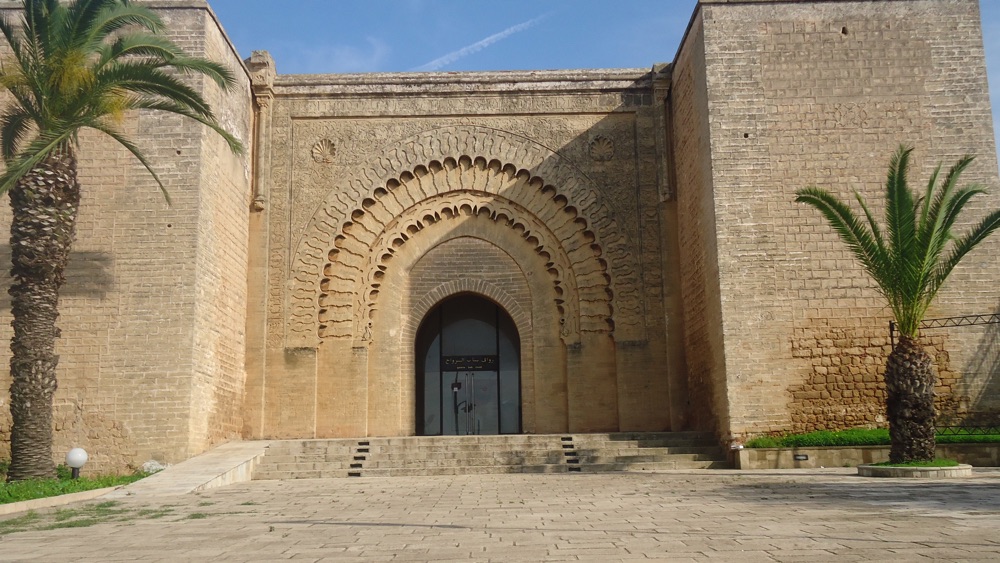
Bab Rouah , Rabat, Morocco
Bab Rouah – The Gate of Departure (Built in 1190–1193)
Known for its elaborate Moroccan-Andalusian design, Bab Rouah is the largest gate in Rabat’s fortifications. Its name, meaning “Gate of Departure”, comes from the Arabic “Rouah,” which means “to leave,” as it historically functioned as an exit point from the western part of the city.
Decorated with striking fluted domes and rich ornamentation, Bab Rouah is now an art gallery, blending its historical grandeur with modern creativity.

Bab El Had, Rabat, Morocco
Bab El Had – The Sunday Gate (Built in 1193–1196)
Named after the Sunday market, Bab El Had was a key commercial hub and gathering place for merchants, locals, and traders. Designed in the traditional Moroccan style, it features decorative elements that enhance its prominence as a lively entrance to Rabat’s medina.
Before entering the city, travelers rested their animals and carriages at Bab El Had, using the space as a stable and storage area. Today, it remains one of Rabat’s most vibrant gateways, leading into the bustling souks and traditional quarters.
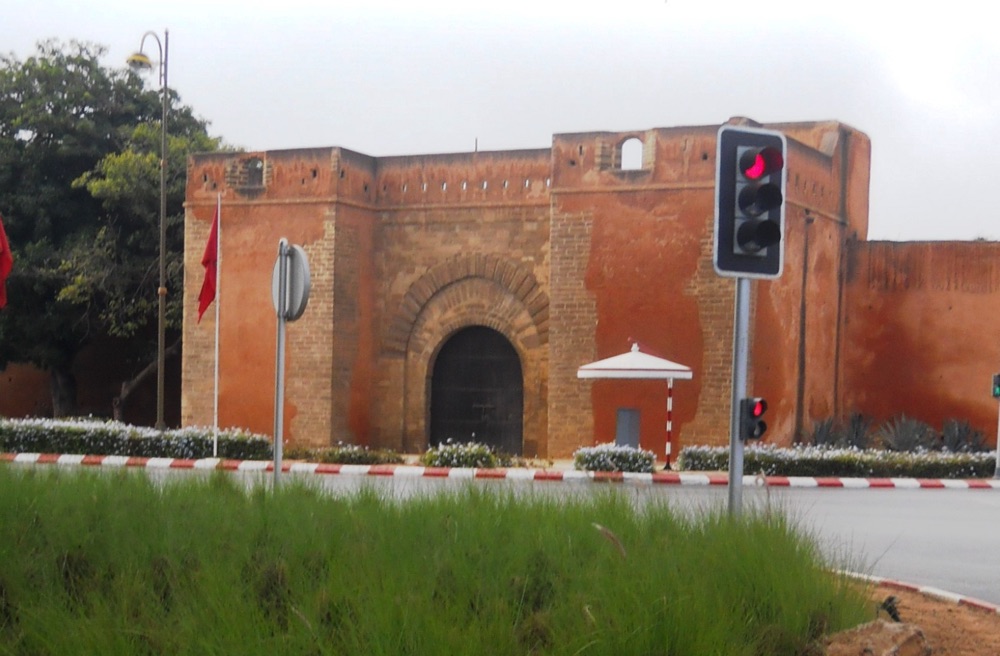
Bab Zaer, Rabat, Morocco
Bab Zaer – The Eastern Trade Gate (Built in 1198)
Bab Zaer, unlike most of Rabat’s gates, follows a minimalist architectural style, mirroring Bab Laalou in its simple and functional design. As the only gate on the eastern side of the city, it facilitated the movement of goods and merchandise, ensuring Rabat remained a thriving trade center.
Standing at 10 meters high, 18 meters deep, and 13 meters wide, Bab Zaer was a practical gateway rather than an ornamental one, serving as an essential passage for commerce.
A Legacy of Strength and Artistic Expression
Rabat’s gates showcase two distinct architectural approaches—while some were adorned with Moroccan and Andalusian decorative elements, others prioritized functionality over embellishment. This duality reflects the city’s rich heritage, security strategies, and economic significance, ensuring both protection and prosperity.
